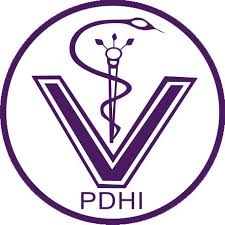Studi Epidemiologi Agen Zoonosis Escherichia coli O157:H7 melalui Analisis Random Amplification of Polymorphic DNA (RAPD)
Abstract
Epidemiological studies of zoonotic agent Escherichia coli O157:H7 have been analyzed pheneticallyand or phylogenetically. In a phenetic classification, micoorganisms are arranged into groups (phena) onthe basis of high overall similarity using both phenotypic and genotypic methods without judgementaspect of its ancestry or evolutionary. Due to its importance to epidemiological aspect, the study of geneticvariation of isolates origin from some sources need to be conducted in order to trace the routes of infection.A total of 20 samples obtained from some sources i.e clinically human feces, non-clinically human feces,cattle feces, chicken feces, and beef feces were used in this study. The study was started by confirming allof the isolates using O157 latex agglutination test and H7 antiserum test, followed by genomic DNAanalysis by random amplification of polymorphic DNA /RAPD methods. RAPD results were analyzed using a simple matching coeficient (Ssm) and alogorhythm unweighted pair group method using arithmeticaverages (UPGMA) programe. Results showed there were range of genetic DNA from local isolates (75.1–99,6%) which was almost similar to ATCC 43894 control isolate. The highest similarity (99.6%) to ATCC43894 control was showed by SM-7(1) isolate obtained from cattle fecal and KL-68(1), isolate obtainedfrom clinically human fecal. In addition, KL-52(7) obtained from clinically human fecal had high similarity(99.6%) to MK-35 isolate obtained from chicken fecal. On the other hand, DS-21(4) and DS-16(2) isolatesthat were obtained from beef had high similarity (84.9%) to other isolates including ATCC 43894 controlisolate. The highest similarity of E. coli O157:H7 isolates that were obtained from cattle feces, beef, andchicken feces to human feces isolate indicated that there were both cattle and chicken were potentialreservoirs of the zoonotic agen which can be transmitted to human.Downloads
Download data is not yet available.
How to Cite
SUARDANA, I Wayan et al.
Studi Epidemiologi Agen Zoonosis Escherichia coli O157:H7 melalui Analisis Random Amplification of Polymorphic DNA (RAPD).
Jurnal Veteriner, [S.l.], p. 142-151, nov. 2012.
ISSN 2477-5665.
Available at: <https://ojs.unud.ac.id/index.php/jvet/article/view/3494>. Date accessed: 09 jan. 2026.
Issue
Section
Articles
Keywords
Zoonoses, E. coli O157:H7, phenetic.


















